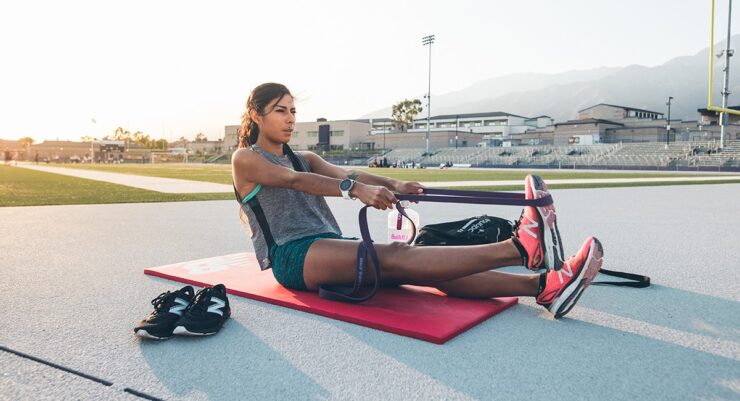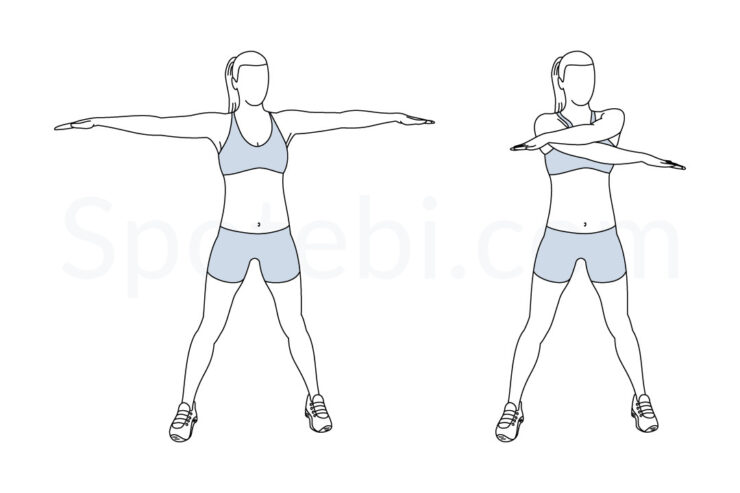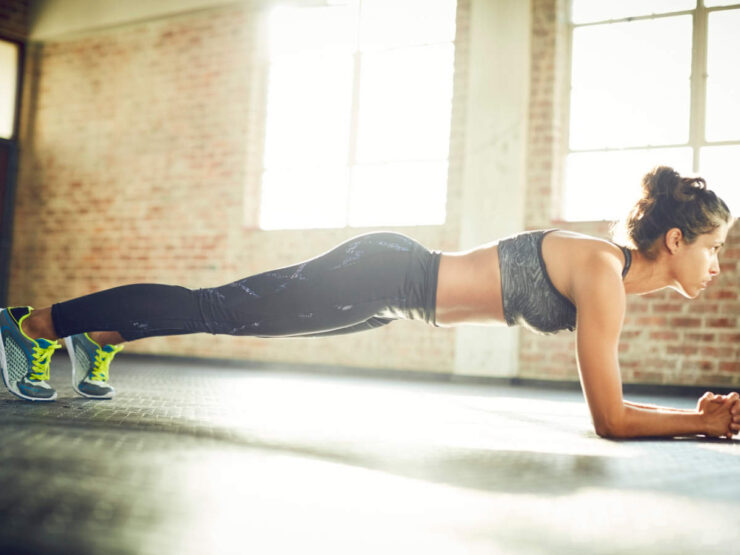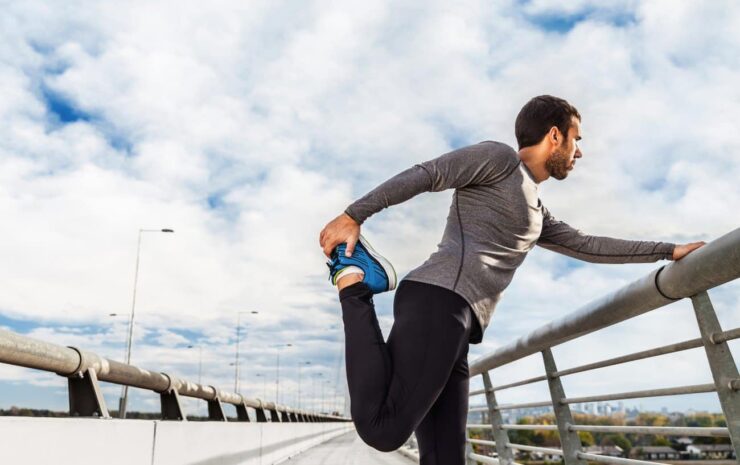Table of Contents
Running is a profoundly simple yet physically demanding activity that offers a myriad of health benefits. However, to reap these benefits fully and avoid injury, proper preparation is crucial. Dynamic stretches, which involve moving parts of your body and gradually increasing reach, speed of movement, or both, are essential in preparing your muscles for the demands of running.
Unlike static stretches, dynamic stretches warm up the body, increase blood flow, and enhance flexibility, making them ideal before a run. Let’s explore the top 14 dynamic stretches that can help you prepare for a run, ensuring you start on the right foot.
Warm-Up Basics

A good warm-up serves as the bridge between rest and physical exertion, signaling your body to prepare for the activity ahead. It increases heart rate, blood flow, and temperature in your muscles, making them more elastic and less prone to injuries. Incorporating tools like CastleFlexx into your warm-up routine can significantly enhance this process. CastleFlexx is designed to target and activate the specific muscle groups that will be engaged during your run, enhancing your performance and endurance by providing a focused stretch that’s hard to achieve through traditional methods alone.
Upper Body Stretches
Loosening up your upper body is crucial for maintaining good posture and breathing effectively while running.
Arm Swings

Arm swings help loosen the shoulders, chest, and upper back, areas that can become surprisingly tense during runs. Stand with your feet shoulder-width apart and swing your arms forward and back at a comfortable height. This movement warms up the shoulder joints and prepares your upper body for the rhythmic motion of running.
Torso Twists
Torso twists engage your core, lower back, and spine, promoting flexibility and stability. With your feet planted and knees slightly bent, rotate your upper body left and right from your waist, allowing your arms to swing loosely. This stretch prepares your core for its stabilizing role during a run.
Lower Body Stretches
The legs bear the brunt of the work during a run, making it essential to thoroughly prepare them.
Leg Swings
Leg swings are a fantastic way to warm up your hips, thighs, and hamstrings. Hold onto a stable object for balance and swing one leg forward and back, then side to side. This mimics the leg movement of running, enhancing flexibility and range of motion.
Lunges with a Twist
Lunges with a twist not only stretch the legs but also activate the core and improve balance. Perform a forward lunge and, while in the lunge position, rotate your torso and arms to one side. This stretch targets the hip flexors, quads, and glutes while engaging the abdominal muscles.
Comprehensive Full-Body Stretches
For a holistic warm-up, these stretches target multiple key areas simultaneously.
Inchworms
Inchworms are excellent for engaging your hamstrings, shoulders, and core. From a standing position, hinge at the hips to touch the ground, then walk your hands forward to a plank position and walk your feet towards your hands.
Dynamic Pigeon Pose
The dynamic pigeon pose targets the glutes and hip flexors, key muscles involved in running. From a plank position, bring one foot forward towards your hand, and gently rock back and forth. This not only stretches the muscles but also helps in improving hip mobility.
Core Activation
Before hitting the pavement, activating your core is vital for stabilizing your torso and improving your running efficiency.
Dynamic Plank

The dynamic plank shifts the traditional plank from a static hold to an engaging movement. Start in a standard plank position, then alternately lift each foot off the ground by a few inches. This variation activates the core muscles, including the obliques, ensuring they’re ready to support your spine and pelvis during the run.
Bird Dog
The Bird Dog exercise strengthens the core, lower back, and shoulders, enhancing balance and posture. Begin on all fours, extend one arm forward while stretching the opposite leg back, and then switch sides. This movement not only activates the core but also encourages proper alignment and coordination, which are crucial for an efficient running form.
Flexibility and Agility
Improving your flexibility and agility can significantly impact your running performance, making it easier to maneuver through varied terrains.
High Knees
High knees enhance lower body flexibility and agility while also increasing your heart rate. Jog in place, lifting your knees as high as possible with each step. Focus on speed and height to maximize the stretch in your legs and hips, preparing your muscles for the dynamic movements of running.
Butt Kicks
Butt kicks focus on the quadriceps and flexor muscles of the hips, improving flexibility. Run in place while trying to kick your buttocks with your heels. This exercise warms up the front of your thighs, ensuring they’re prepared for the impact of running and aiding in preventing injuries.
Balance and Coordination
Enhancing your balance and coordination is essential for navigating uneven surfaces and maintaining a steady pace.
Single-Leg Reach
The single-leg reach improves balance, coordination, and lower body strength. Stand on one leg, reach forward with the opposite hand to touch a point on the ground, and return to the starting position.
Skater Hops
Skater hops develop lateral agility and balance, mimicking the side-to-side movement often encountered during runs. Leap from one foot to the other, landing softly and balancing briefly before hopping to the opposite foot. This dynamic stretch strengthens the legs and improves your ability to change directions quickly and efficiently.
Cool Down and Recovery
After your run, it’s crucial to cool down properly to aid in recovery and reduce muscle soreness.
Gentle Jog to Walk
Transitioning from a gentle jog to a slow walk helps gradually lower your heart rate and begin the recovery process. This simple cooldown method allows your body to adjust from the high intensity of running to a state of rest, facilitating a smoother recovery phase.
Static Stretches
Post-run, incorporate static stretches targeting the major muscle groups used during your run. Hold each stretch for at least 30 seconds to improve flexibility, reduce muscle tension, and decrease the risk of injury. This practice helps in repairing and strengthening the muscles, ensuring they’re ready for your next run.
Conclusion
Incorporating these 14 dynamic stretches into your pre-run routine can significantly enhance your running experience, improving performance, and reducing the risk of injury. Remember, the key to effective stretching is consistency, so make these stretches a non-negotiable part of your running regimen.

